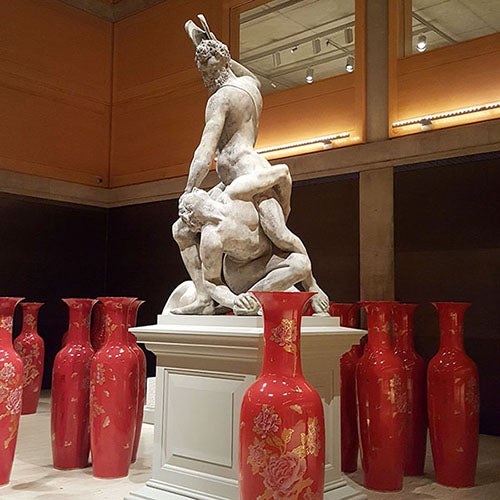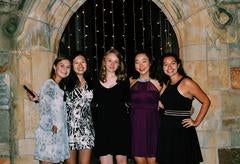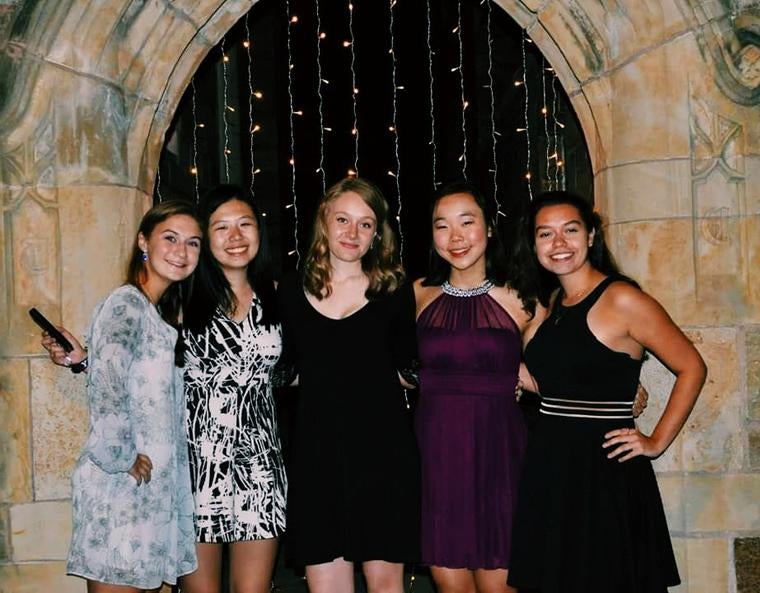

Kazimir Malevich’s Black Square, currently in the Tretyakov Gallery in Moscow.
We sit in the auditorium of the Yale Center of British Art, a lecture-hall filled with students from all walks of life, all sharing one common trait – it’s 11:57 AM on a Thursday, and we’re all staring at a projected photo of Kazimir Malevich’s Black Square. Coming into the class, I would have never imagined a black square on a white background to be worthy of examination through lecture. Now, I cannot imagine a discourse on art history without mention of Malevich’s work, without the single black square blinking right back at us in that lecture hall.
This semester, I am taking my first History of Art class at Yale, a survey course discussing art from the Renaissance to the Present with Professor Tim Barringer. We have lecture classes twice a week, sometimes in the Yale Center of British Art (YCBA), and sometimes in the Yale University Art Gallery (YUAG). When I signed up for the class, I had no idea that I would be studying some of the 200,000 objects in the oldest college art museum in the U.S, and the beautiful artwork in the largest collection of British art outside the United Kingdom.
I am not a student of art, at least I did not think of myself as one before coming to Yale. I have always been very resolute in my interest in political science and international affairs, and did not necessarily think of my Yale career to include hours and hours examining the gilded halos of Madonna and Child, the Romantic landscapes of John Constable, or the almost-audible explosions of Wassily Kadinsky. I have found, however, that my newfound knowledge on the basics of art history has had direct applications in my other coursework. It feels as if I have gained a new toolbox of historical knowledge, a new way of thinking about the world around us, and a deeper appreciation for the artistic expression of society. One of my favorite feelings at college is when the course material in my different classes overlap with one another, and I can examine similar themes and common ideas in disparate classes. This semester, I go from one class on Race, Ethnicity and Immigration to one on Astronomy, to another on the History of Art, and can identify common threads that run through all of those classes, and can even sum up my day of learning into a cohesive thesis. In fact, I love being able to mention my coursework from my History of Art class about orientalism in an analysis of colonial influences on the Algerian civil war, and knowledge about residential segregation in a discussion about human rights law, or even Hubble Deep Field in a comparison of Vorticism and Suprematism.

A candid of me and a bunch of other faces in the Yale University Art Gallery! ;
In addition to attending lectures, we participate fully in weekly sections, which are hour-long walks through the museums in smaller groups led by Teaching Fellows. Since we focus on different artistic movements and themes every week, we follow our Teaching Fellows through the high ceilings of the YUAG and the smooth grey walls of the YCBA to visit closely the works of art we study in class. It almost feels like a regular pilgrimage, made by art students to leave the textbook and lecture slides, and actually examine each work of art in person. In groups of around ten students, we are encouraged to physically get close to the paintings or sculptures, and complete inquiry-based learning to discover the story told by each piece of art.
I spend most of my afternoons in these museums, either to complete essays for class or just to study in their many well-lit spaces. I see large tour groups pass by, little children pointing to towering statues and the discerning observer sticking their noses to examine the etchings in the golden frames. A couple next to me is chatting loudly about the meaning of Edward Hopper’s Western Motel. Someone asks me if I know where to find the van Gogh pieces. Having just examined Le café de nuit myself, I confidently point them in the direction of 19th century artwork. In that moment, it suddenly dawns on me that these are my art museums. They belong to every Yale student who wants to take advantage of their amazingly endless stores of knowledge and history, and they will welcome us with open arms. Both the YCBA and YUAG are just a few steps away from my residential college, filled with all sorts of mysteries and treasures and critiques and revelations just waiting to be had. I am incredibly excited about spending time on the museums’ plush couches, in front of radiating pieces of art, and getting to know Yale and the world around us better through the lenses of an art-lover.

The entrance court of the Yale Center of British Art! I hope to see all of you here sometime.

